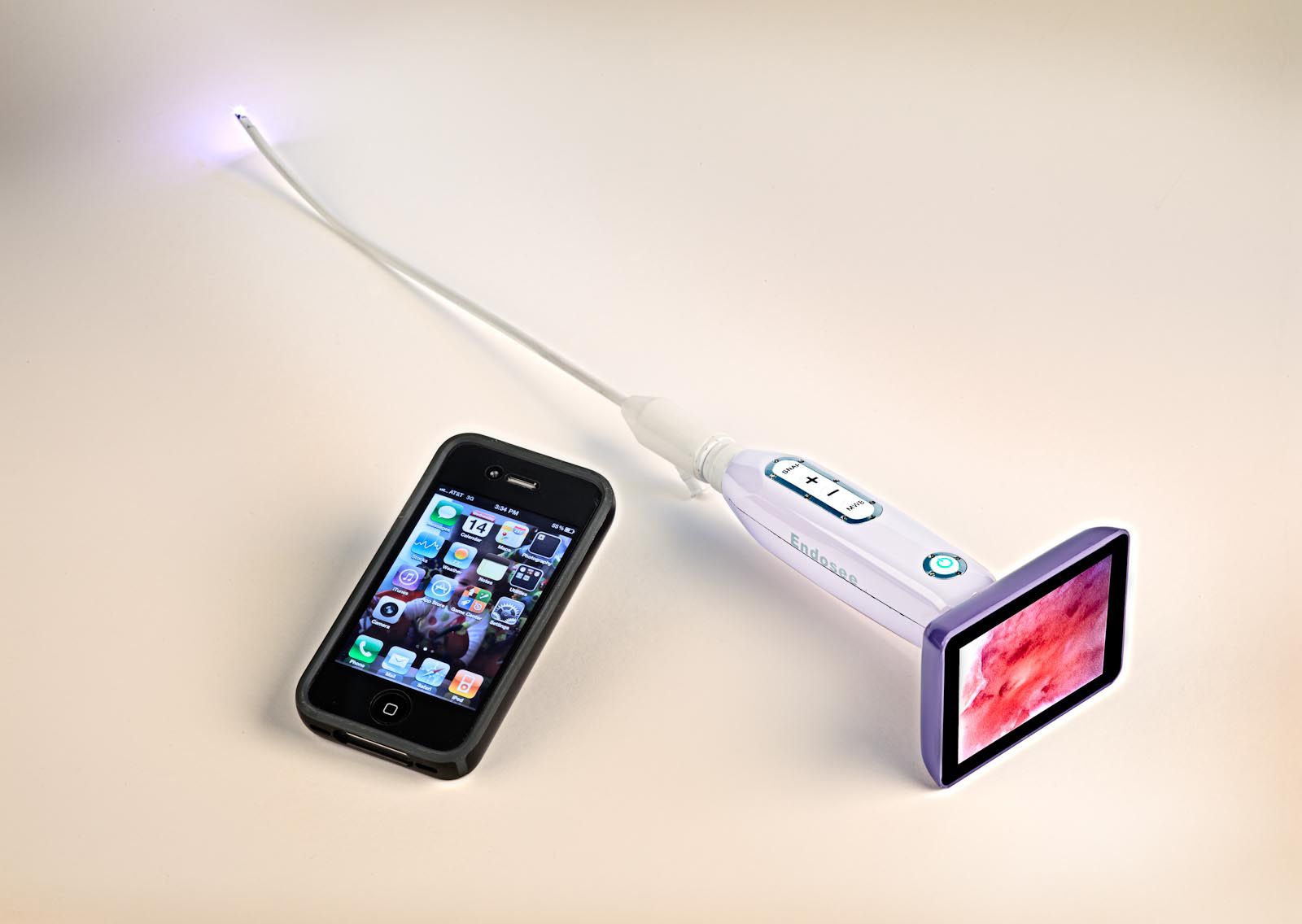New Device Makes Office-Based Hysteroscopy Possible
An interview with Paul D. Indman, M.D., Los Gatos, CA.

Hope Waltman: Hysteroscopy has long been considered the “gold standard” for the evaluation of the endometrial cavity, yet fewer than 10% of OBGYN specialists in the USA are able to do hysteroscopy in an office setting. Why do you think that is?
Dr. Indman: Hysteroscopy with conventional instruments requires a light source, video camera, monitor, as well as the actual hysteroscopes. This requires a large capital outlay and takes quite a bit of space. Hysteroscopes are fragile and must be sterilized for each use, so preparation takes quite a bit of staff time.
Hope Waltman: How is this changing?
Dr. Indman: Last year I was approached by Bruce OuYang, PhD., who is a leading expert in imaging sensors used in medicine. He had a video camera the size of a pinhead, and was wondering how it could be used in gynecology. Together we developed a small handheld hysteroscope system. It consists of a small reusable handle with a screen the size of a smartphone, coupled to a sterile single-use hysteroscope utilizing a built-in high resolution camera integrated with high intensity light source. There is a port for infusing saline to distend the uterus to allow visualization of the endometrial cavity. I should mention at this point that the hysteroscope has investigational status and has not yet been cleared by the FDA for commercial use.

Hope Waltman: How do you envision using this in an office setting?
Dr. Indman: Preparation is similar to that of a simple endometrial biopsy, other than filling a 60mL syringe with saline. As with an endometrial biopsy, the physician has the option of doing a paracervical block. The hysteroscope is similar in diameter to that of an IUD inserter, so a minimal amount of cervical dilation may be required for postmenopausal women.
The hysteroscope component will come packaged in a sterile pouch, similar to an endometrial biopsy curette. This is attached to the handle, and while a medical assistant infuses saline with the syringe, the hysteroscope is inserted under direct vision into the uterus. An endometrial biopsy can then be taken, if indicated. The whole procedure should take only several minutes longer than a blind endometrial biopsy alone.
Hope Waltman: Will it be economically feasible for the typical OBGYN to use this technology?
Dr. Indman: I expect that when the product becomes available, the cost of the handle will very reasonable, and the hysteroscope portion will also be affordable. As no capital outlay is required, there is no reason why every gynecologist should not be able to offer office hysteroscopy.
Hope Waltman: Do you have any other plans for this technology?
Dr. Indman: Our first instrument is a simple hysteroscope. We are working on operative models that can be used for placement of tubal sterilization devices and other procedures. There are also applications for this technology in other specialties.
Hope Waltman: Do you have any concluding remarks?
Dr. Indman: Having performed office hysteroscopy for thirty years, I have seen the benefits to women in getting rapid and accurate diagnosis of gynecologic problems. The patient is the main winner, because we expect that all gynecologists will be able to easily perform office hysteroscopy. The physician benefits, as it will be feasible to get started in office hysteroscopy without a large financial outlay. The insurance companies benefit because it is far more cost-effective to move diagnostic hysteroscopy out of the operating room and into the office. This is truly a win-win-win situation.
Recap on reproductive rights with David Hackney, MD, MS
December 20th 2022In this episode of Pap Talk, we spoke with David Hackney, MD, MS, maternal-fetal medicine physician at Case Western Reserve University and chair of ACOG's Ohio chapter for a full recap of where restrictions on reproductive rights have been and where they're going.
Listen
In this episode of Pap Talk, Gloria Bachmann, MD, MSc, breaks down what it means to be a health care provider for incarcerated individuals, and explores the specific challenges women and their providers face during and after incarceration. Joined by sexual health expert Michael Krychman, MD, Bachmann also discusses trauma-informed care and how providers can get informed.
Listen
No link found between hormonal contraception and clitoral adhesion severity
February 28th 2025A recent study presented at the ISSWSH 2025 Annual Meeting found no significant association between hormonal contraceptive use and the severity of clitoral adhesions, though researchers emphasize the need for further investigation.
Read More
